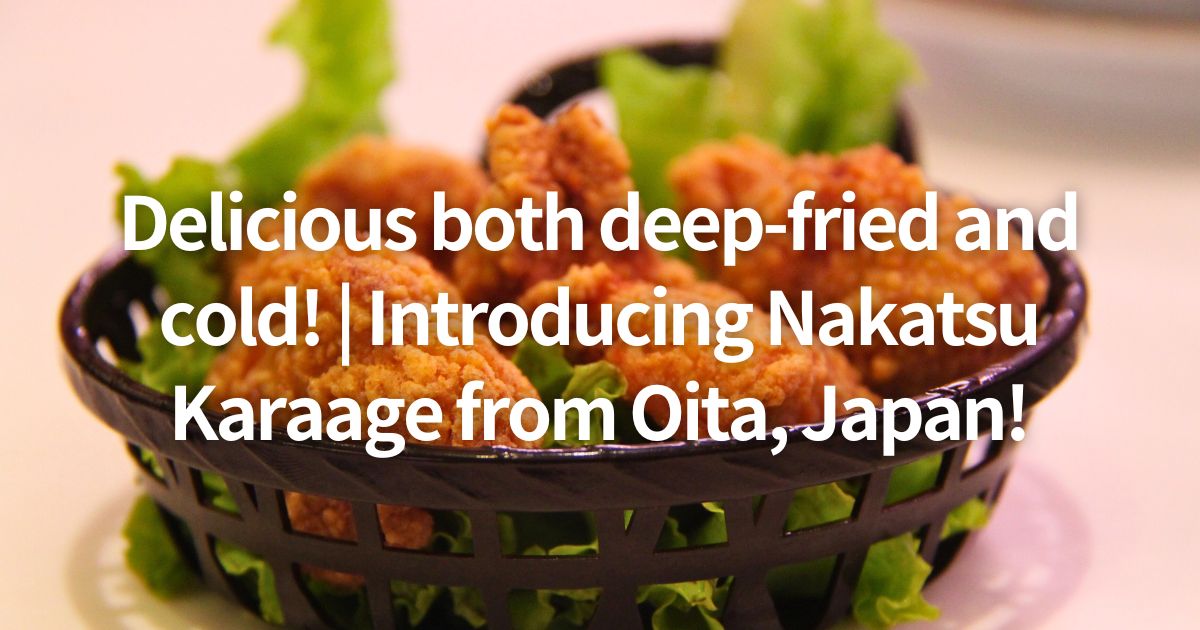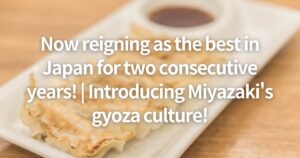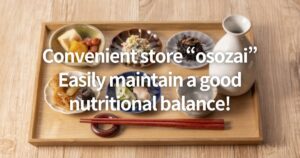There are many reasonably priced and delicious foods in Kyushu compared to Tokyo, and I highly recommend karaage in Nakatsu, Oita.
Nakatsu in Oita is also known as the “holy land of fried chicken,” where karaage lovers (maniacs) from all over the country gather, and the level of quality at each restaurant is very high.
Nakatsu Karaage is made by carefully preparing fresh chicken and marinating it in each restaurant’s secret sauce, which prevents heartburn when deep-fried and tastes great even when cold.
There are also many variations in the parts of the chicken and the seasoning, and locals often say, “Today, I want to eat a certain type of fried chicken, so let’s go here! They use different restaurants for different purposes.
So, in this article, I will explain about Oita’s Nakatsu Karaage, its history, points of attraction, recommended specialty stores, and sightseeing spots in the area, while also sharing my own experiences.
I hope you will find this article a good opportunity to learn about karaage in Nakatsu, Oita.
Why is Oita’s Nakatsu karaage famous in the first place?


Nakatsu City in Oita Prefecture is officially recognized by the Japan Karaage Association as the “sacred land of karaage,” and there are many karaage specialty restaurants in the city.
Nakatsu City is also the birthplace of the “Karaage Festival” held throughout Japan, and its brand power is now well known throughout the country.
The history of Nakatsu karaage dates back to 1970, when Moriyama Karaage Shop (now Nakatsu Karaage Sohonke Moriyama) and Hosokawa (now Super Hosokawa) opened Nakatsu’s first karaage specialty store.
The “birthplace of karaage specialty restaurants” in the neighboring city of Usa spread and became an established part of Nakatsu City’s food culture.
The birth of karaage is attributed to the fact that there were many poultry farms in Nakatsu due to the postwar food policy, which made it easy to obtain chicken, and also to the fact that people repatriated from Manchuria reproduced Chinese chicken dishes.
Later, the dish spread as an everyday food for the local people due to its delicious taste, and today, it continues to be loved as the soul food of Nakatsu citizens.
Why is Nakatsu Karaage in Oita particularly delicious?


The most distinctive feature of Nakatsu karaage is that it uses a thinner batter than most karaage.
This makes it juicy and crispy when fried, and allows the true flavor of the chicken to be enjoyed directly.
The flavor is well seasoned all the way to the center of the meat, and the more you bite into it, the more the juices overflow, creating an exquisite taste.
At each restaurant, the chicken is marinated in a sauce made from about 10 different seasonings, including garlic and ginger, based on soy sauce and salt, to create a unique flavor.
Each restaurant has its own unique flavor depending on how the sauce is made, how long the chicken is marinated, and the hidden flavor.
The cooking method is also very particular. All the oil used for frying is not replaced, but only the dirty oil is discarded and the reduced amount is added to the oil.
This means that the chicken broth is condensed in the oil used for frying, resulting in a rich, thick flavor.
Furthermore, since the dish is designed to taste good even when cold, it has the advantage of not losing its quality even when taken out.
That’s right. The charm of Oita’s Nakatsu Karaage is that it’s hard to get heartburn and tastes good even when cold…
Three Attractions of Nakatsu Karaage in Oita
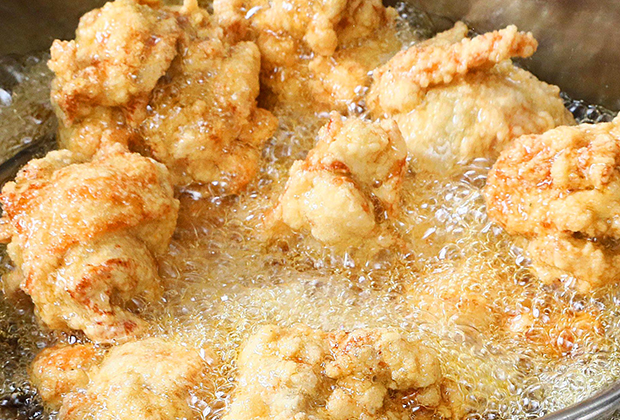

I have summarized some of the attractions of Oita’s Nakatsu Karaage.
Distinctive taste and texture
Unlike most karaage, Nakatsu karaage features a thin batter, which gives it a crispy texture and juicy gravy when fried.
The basic seasoning is made by marinating the chicken in a unique sauce based on soy sauce and salt and about 10 different seasonings, including garlic and ginger.
The flavor permeates all the way to the center of the chicken, and the more you bite into the chicken, the more juices flow out of the meat, giving it an exquisite flavor.
In addition, many restaurants are particular about not using chemical seasonings, pursuing a natural flavor that is healthier for the body.
One feature of Nakatsu Karaage in particular is that it is designed to taste good even when cold, so you can be satisfied even if you take it out and eat it while sightseeing.
Cultural background as the “holy land of karaage
Nakatsu City in Oita Prefecture is officially recognized by the Japan Karaage Association as the “Mecca of karaage,” and there are many karaage specialty stores clustered in the city.
It is said that there are more of them than convenience stores, and a “karaage festival” is held there.
The origin of Nakatsu karaage is said to derive from the local characteristics of the area, where there were many poultry farms due to the postwar food policy, as well as the fact that people repatriated from the former Manchuria reproduced Chinese chicken dishes.
Today, it has become an established daily food for Nakatsu citizens and an indispensable local dish for special events.
Many restaurants compete with each other to offer their own unique flavors, making it a popular gourmet spot where visitors can enjoy eating and comparing different types of food.
Craftsmanship and traditional cooking methods
Nakatsu Karaage has a unique craftsmanship in its cooking method: the oil used to fry the fried chicken is not replaced, but only the soiled oil is discarded and the remaining oil is added to the oil.
This allows for deep frying in a special oil in which the chicken broth is concentrated, resulting in a deep, rich flavor.
Each restaurant insists on using only the freshest chicken meat from Kyushu, which allows customers to enjoy different textures and flavors depending on the part of the chicken.
Many restaurants offer not only thighs and breast meat, but also rare parts such as gizzards and seseri, making it possible to compare various types of chicken.
Many restaurants start deep frying only after receiving orders, which requires a 10-minute wait time, but this is worth it for the freshly deep-fried, hot karaage.
The frying technique and even the way the meat is cut differ from store to store, and each store takes pride in its offerings.
It is interesting that there are more karaage specialty restaurants than convenience stores. I’d like to go to the karaage festival …
My recommendation for Nakatsu fried chicken restaurants in Oita
In this article, I would like to introduce my top recommendation for Nakatsu Fried Chicken and its menu.
My recommendations for the best Nakatsu fried chicken restaurants in Oita
My recommendations for the best Nakatsu fried chicken restaurants in Oita
Nakatsu Karaage Sohonke Moriyama


✅ Recommended Points
- Founded in 1970, Moriyama is a long-established restaurant known as the birthplace of Nakatsu Karaage.
- The secret garlic sauce is based on salt, and only domestic garlic is used.
- The restaurant is also particular about the oil it uses to fry the fish, which it keeps in a continuous supply to maintain the best frying conditions.
- With a taste that will keep you coming back for more, this is a must-visit restaurant when you visit Nakatsu.


✅ Recommended menu
- Bone-in Karaage
- Our recommended menu item is the “bone-in karaage,” a simple yet deeply flavored fried chicken.
- According to the owner, Mr. Moriyama, the more meat on the bone, the more flavorful it is.
- Sunazuri,” which has a crunchy texture, is also popular among local customers who order it with karaage and goes perfectly with sake.
- The menu is diverse, including “karaage with bone (karaage) (about 2 pieces, 280 yen/100g)” and “boneless (thigh meat) (about 3 pieces, 300 yen/100g),” allowing customers to compare various parts of the meat.
- All products are free of chemical seasonings, so they are healthy and safe to eat.
Kara-Age Shop Karaichi
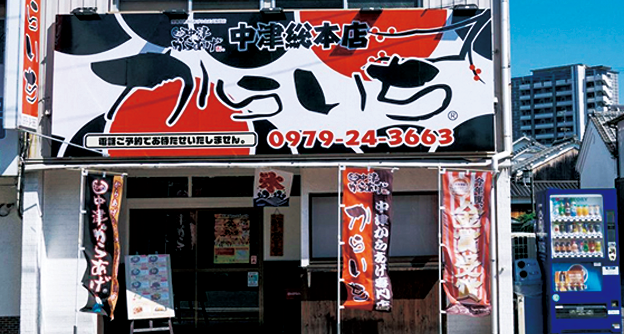

✅ Recommended Points
- This popular restaurant is conveniently located near Nakatsu Station and Nakatsu Castle, a famous tourist attraction.
- Only fresh chicken meat from Kyushu is used instead of frozen products, giving the karaage its characteristic elastic and chewy texture.
- Recommended for those who like their fried chicken with a strong flavor, the restaurant boasts a flavorful sauce made by marinating more than 10 different ingredients, including spices and fruits, in soy sauce and aging them.
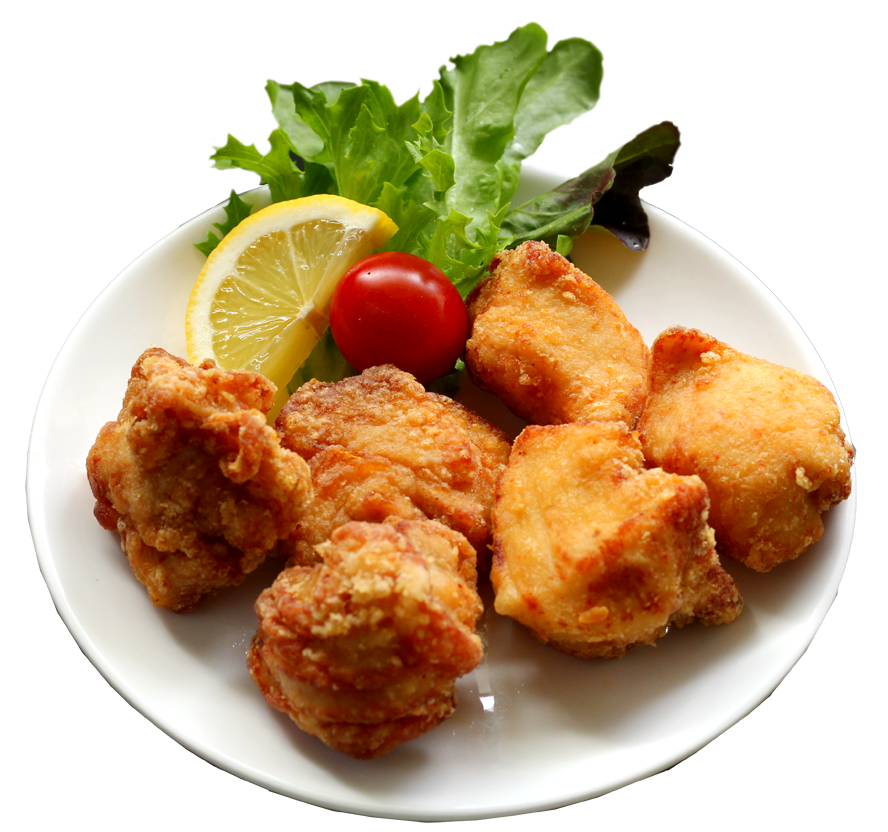

✅ Recommended menu
- Boneless Mix
- Our recommended menu item is the Boneless Mix.
- At 320 yen for 100 grams (3 pieces), you can enjoy the taste of the garlic soy sauce sauce that is proudly soaked into the chicken meat.
- Marinated for 24 hours in the homemade sauce, which combines the flavor of garlic, the richness of soy sauce, the spiciness of chili pepper, and the sweetness of fruit, the fried chicken is delicious even when cold and goes great with rice.
- The restaurant’s special karaage bento boxes are also very popular, perfect for a break in between sightseeing.
- You can enjoy the taste of this talented dish, which has won a gold medal in the western Japan soy sauce sauce category for nine consecutive years.
Nakatsu Iro-toridori
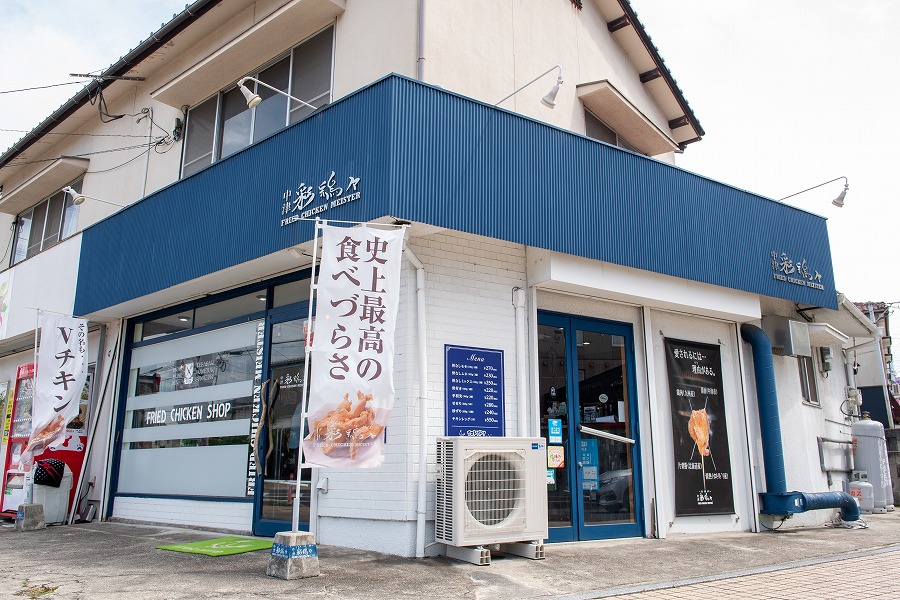

✅ Recommended Points
- This take-out specialty restaurant is only a 3-minute walk from Nakatsu Station.
- The owner is such a “karaage connoisseur” that he calls himself a “fried chicken meister.”
- He handles everything from procurement to cutting, marinating in sauce, and deep frying, all by himself to ensure consistent quality control.
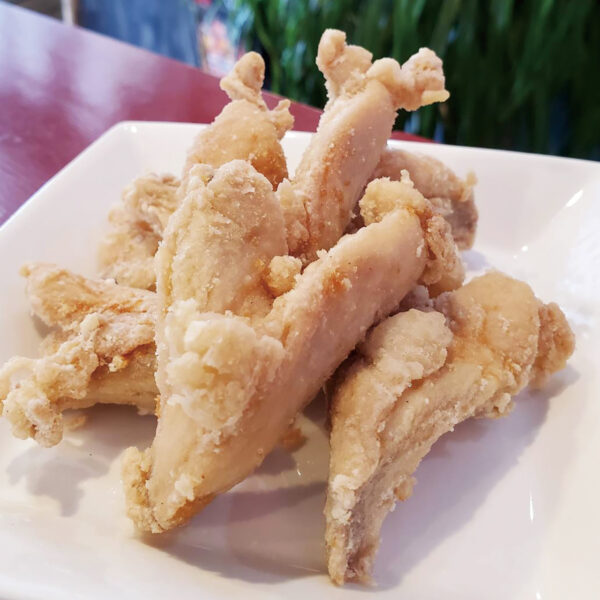

✅ Recommended menu
- Seseri
- Our recommended menu item is seseri.
- It was awarded the highest gold medal in the “Western Japan Taste Variety Category” at the Karaage Grand Prix in 2024.
- The “seseri” (100g, 380 yen), made from rare parts, is a popular menu item that is sure to sell out, and is especially popular among chicken connoisseurs.
- Made from 100% Kyushu chicken and marinated for 24 hours in Nakatsu’s special soy sauce-based sauce blended with garlic and fruits, the juicy karaage has a delicate yet bold flavor with attention to detail.
- Some recipes use an original sauce with less garlic flavor to make it easier for children and women to eat, and the owner himself is particular about how the chicken is cut, processed, and preserved.
Most karaage specialty restaurants in Oita do not allow eat-in, but only take-out, but I would definitely like to try their hot karaage…
Column: What is the difference between Karaage and Tatsuta-age?
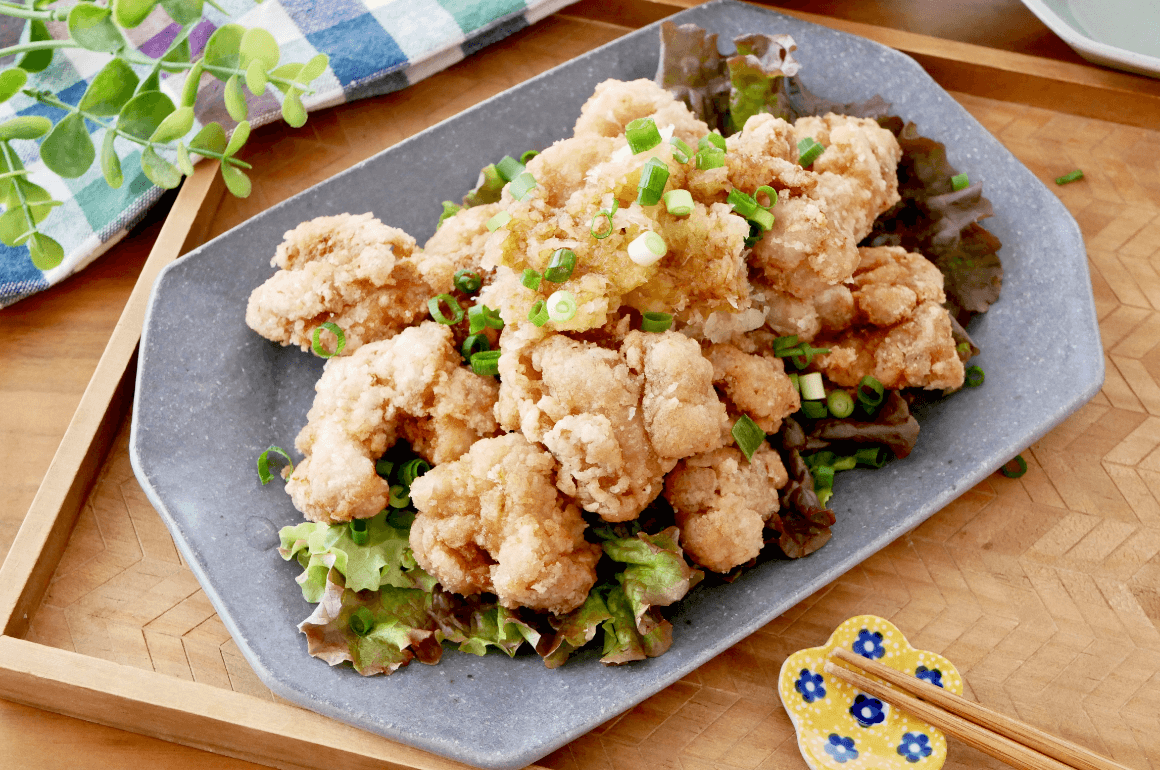

It is difficult to distinguish between karaage and tatsuta-age because they look similar, but there is an important difference.
Karaage originally refers to “a dish lightly dusted with flour or potato starch and deep-fried in hot oil,” and was originally cooked without seasoning.
In Chinese characters, it is written “karaage,” meaning a cooking method introduced from China, and is a general term for a cooking method applicable to a variety of foods (meat, seafood, vegetables, etc.).
Tatsuta-age, on the other hand, is a dish that originated in Japan, and its name comes from the Tatsuta River, which runs through the northwestern part of Nara Prefecture.
The river is famous for its autumn leaves, and the romantic origin of this dish is that “the red color of the meat dipped in soy sauce mixed with the white powder of the thick batter was likened to autumn leaves floating on the white waves of the Tatsuta River” in reference to the scenery of this river.
Tatsuta-age is characterized by the fact that it is always seasoned (mainly with soy sauce and mirin) and only potato starch is used for the batter.
It is also made with fish and other meats as well as chicken, and in the past, whale tatsuta-age was even served in school lunches.
Today, however, the boundary between the two has become blurred, as karaage is also seasoned and flour is used for tatsuta-age.
As a result, some people even consider “karaage” to be the general term for fried food prepared in a similar way, including tatsuta-age.
Heh. So now there are no clear differences anymore. I guess it reflects Japan’s rich food culture.
Recommended places to stop by in Nakatsu, Oita while dining
Here are three recommended places to stop by in Nakatsu, Oita during your meal.
✅ Nakatsu Castle


Nakatsu Castle in Nakatsu City, Oita Prefecture, was built by Kanbei Kuroda, a general in the Warring States period.
Located about a 15-minute walk from JR Nakatsu Station, it is a popular sightseeing spot where visitors can easily stop by after eating Nakatsu Karaage.
The castle also functions as the “Okuhira Family History Museum,” where visitors can learn about the Nakatsu clan in the Edo period and the history of the castle town.
The museum just completed renovation work and pre-opened in May 2025, so the new exhibits are also a highlight.
It is one of the top three most popular tourist attractions in the Nakatsu Station area and is not to be missed, especially by history buffs.
The view from the castle is spectacular, and the surrounding area is dotted with historical sites and historic ruins.
The castle town is also home to many restaurants specializing in karaage (fried chicken), so visitors can enjoy strolling around the castle town while eating their fill.
Known as a water castle facing the Suo Sea, it is a valuable cultural heritage that conveys the defense technology of the time to the present.
✅ Ao no Doumon (Blue Cave Gate)
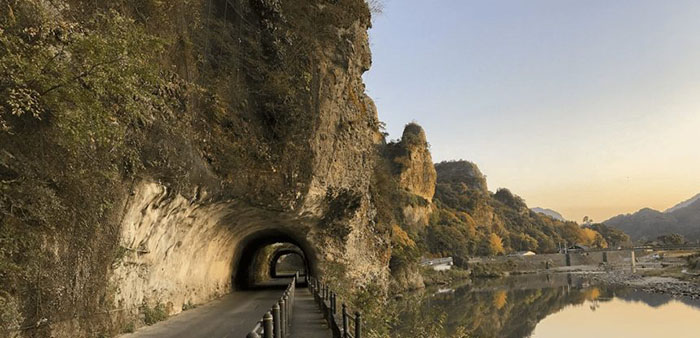

Ao no Doumon (Blue Cave Gate) is a historic cave gate (tunnel) that was made famous by Hiroshi Kikuchi’s short story “Beyond Vengeance”.
It is a 342-meter-long passage (the tunnel portion is 144 meters) that was dug over a period of more than 30 years using only a chisel and a hammer by Zenkai, a Buddhist monk in the Edo period, out of compassion for those who lost their lives in the dangerous and difficult place.
The tunnel is now accessible by car, but the marks of the chisels carved by hand from that time still remain in some parts of the tunnel, which serves as a reminder of the hard work done in those days.
The name “Ao no Domon” comes from the district’s name “blue,” and in spring, nemophilas are planted around the area, and the blue flowers beautifully color the surroundings of the competing mountains.
It is about a 20-minute drive from Nakatsu City, and free parking is available in the surrounding area.
The area around the cave gate is popular as a photo spot, especially during the season of autumn leaves, when it is crowded with many tourists.
You can visit with a takeout of karaage while enjoying the spectacular view of the strange rocks and canyon.
✅ Yabakei Gorge
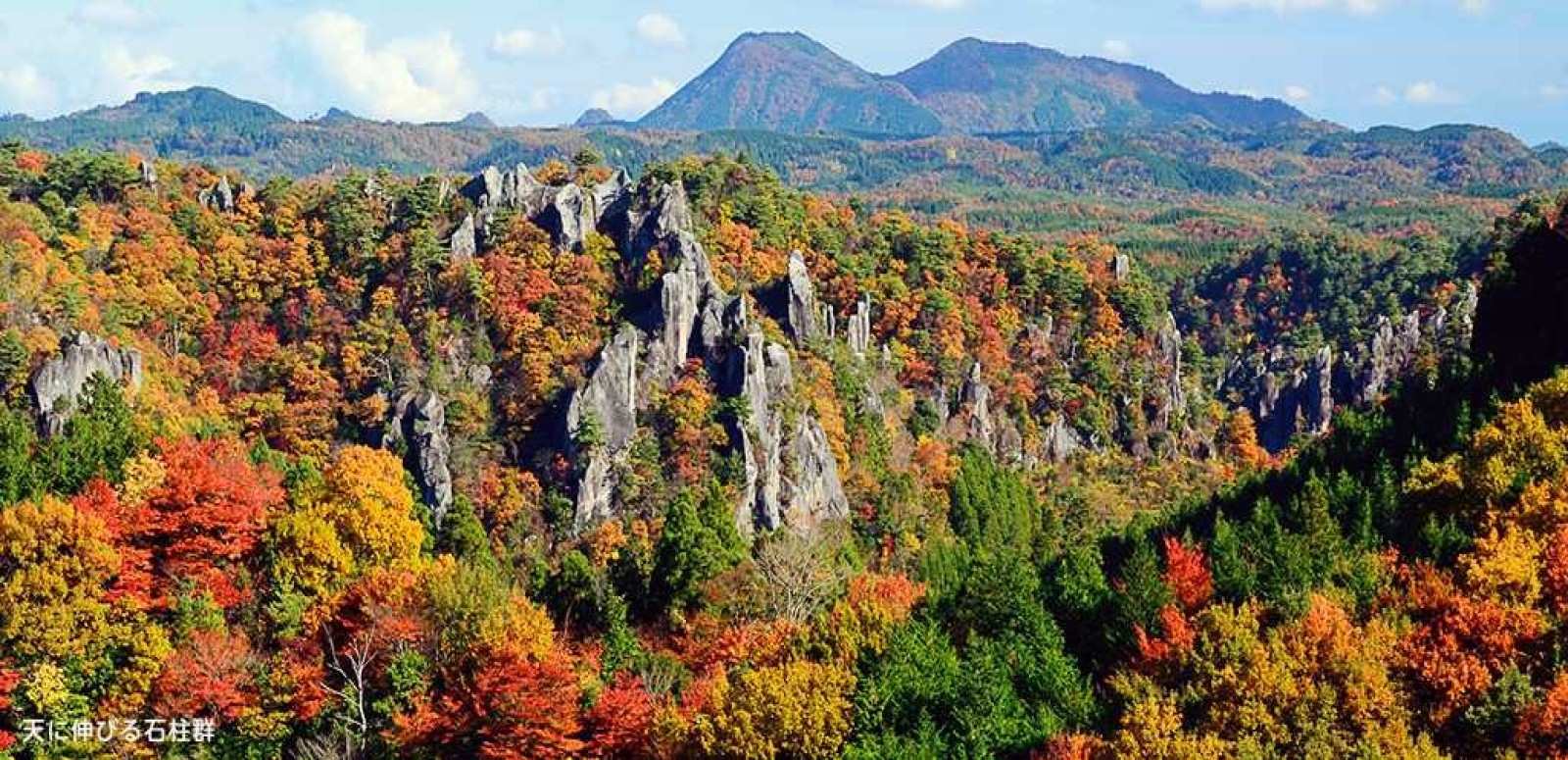

Located in Nakatsu City, Oita Prefecture, Yabakei is one of the most famous scenic spots in Japan and is one of the “Three Great Scenic Spots of Japan.
The scenic area stretches along the Yamakuni River, and is dotted with strange rocks, superb peaks, and other wonderful scenery.
It is said that when the late Edo period writer Sanyo Rai visited the area, he named it “Yabakei” (meaning “valley of Yaba”) because he thought the scenery looked like a Chinese landscape painting.
The autumn foliage season is especially beautiful, from late October to mid-November, when the mountains are a spectacular sight in red and yellow.
There are many scenic spots, including Hitome Hakkei and Sarutobi Sentsubo Gorge.
In addition to Ao no Domon, Hisashi Maple and Hitome Hakkei Observatory are also must-see tourist attractions.
There is also a bicycle path called “Maple Yama Cycling Road” in the area, which was built on the remains of an abandoned railway line, and renting a bicycle is also a popular way to see the sights.
There are many sightseeing spots concentrated with history, nature, and culture, so please stop by if you are in the neighborhood.
Let’s go to Nakatsu, Oita to enjoy the real taste!
The best way to enjoy Oita’s Nakatsu karaage is to go there and enjoy the atmosphere, so I would like to recommend some items that would be good to take with you on your trip.
In this article, I will introduce some of my recommended travel items that can be purchased on Amazon.
I hope you will find them useful when considering travel items.
If you are interested, check out the following products on Amazon!




30X Tabletop Actress Mirror Desk Mirror Mirror with LED Light





